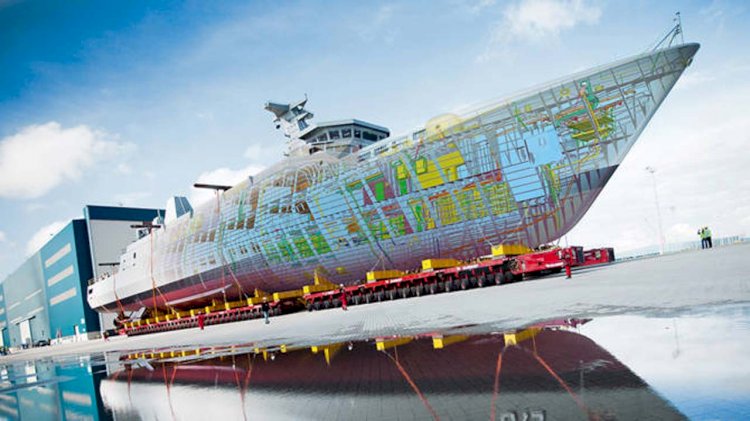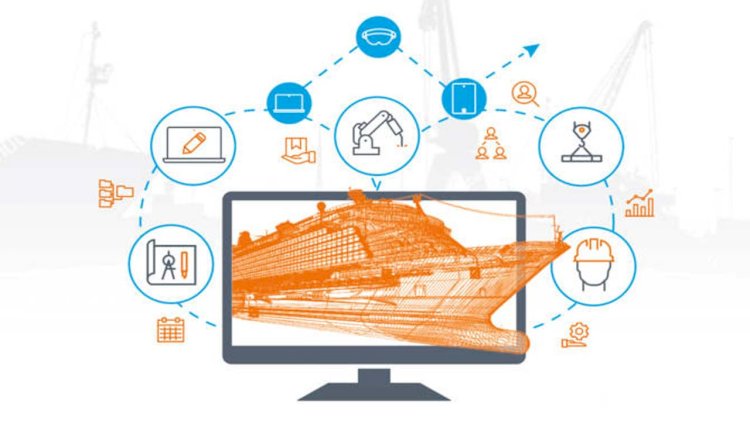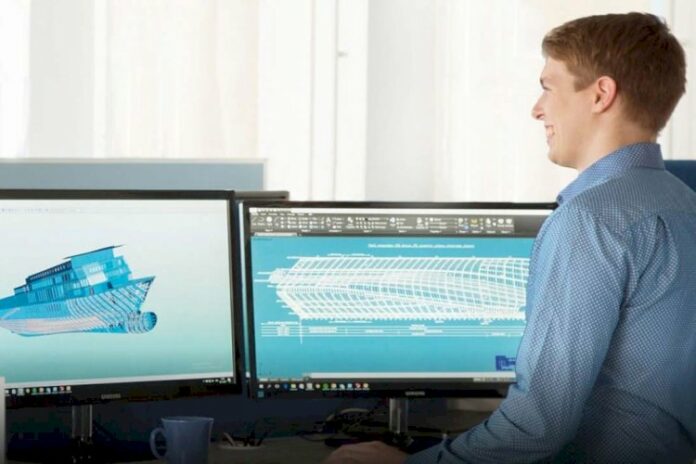What is data-driven shipbuilding?
Data quality, consistency, and interconnectivity, as well as the maximized automation of data handling throughout the entire ship design and shipbuilding process are key factors in unlocking greater efficiency, increasing productivity and boosting profitability.
In data-driven shipbuilding, digital data streams are consistent, reliable, and reusable across disciplines, project phases and ship series. Data drives and connects the entire shipbuilding process while manual data handling is minimized or eliminated to safeguard data integrity and optimize the shipbuilding process.
The quest is not only to optimize operations, reduce errors dramatically, and to get it right the first time, but to enable shipbuilders to manage changes more efficiently when errors or other factors necessitate changes. If changes are required at any stage of the shipbuilding process, the advanced digitalization and interconnectivity of data means that upstream and downstream changes can be efficiently implemented while the consistency of data is retained.
3D CAD model at the core of data-driven shipbuilding
The core of all a ship’s data is created in and resides in the CAD 3D model. A myriad of calculation and analyses programs and other systems can run on top of the CAD core, incrementally adding to and creating the digital model of the vessel.
Data integrity ensures that the ship 3D model can be used to support and drive scheduling, planning, production, prefabrication, and building for optimal results.

Embedded knowledge in 3D CAD tools
In addition to tools for 3D modeling and design, design applications have a significant amount of embedded engineering practices and standards. Harnessing the knowledge of specialists in each discipline, CAD serves as a universal knowledge hub, applying the best solutions for each part of the model and ensuring consistency of design and compliance with regulations.
Designers can benefit from customized settings, specifications, predefined modules and previously created modules and sister ship projects. The personal experience of designers is less critical in such cases and can be supported by the software.
Decades of experience and highly specialized training is no longer required to produce accurate construction information. This allows engineers and designers to focus on creating new projects and sustainable designs, while the software takes care of calculations and the accuracy of data.
Digital model and digital twin
Traditionally, CAD revolves around first modelling a vessel in a digital environment, and then building accordingly. It is a way of evaluating design options and considering different possibilities without having to do it with physical objects.
Processes and systems can be modeled, 3D layouts checked for assembly and building stages and costs evaluated before the work at the construction site begins. In this process, information flows from the digital model to the physical object in one direction.
A digital twin emphasizes a bi-directional approach. The information flows not only from the digital asset to the physical world, but also loops back, where information from the yard and production merges with the digital model. This approach resulted in information management applications inside or around CAD tools, such as CADMATIC eShare.
A digital twin does not exist in isolation. It requires a software platform in addition to hardware storage facilities. The eShare platform allows digital twins to be created incrementally. It can store and merge 3D models in various CAD formats and effectively integrate data from other systems, such as PDM/PLM/ERP/MES and more. It provides users access to all this data using the latest advanced visualization technology and by extracting the required data on demand.

Integrating systems throughout shipbuilding life cycle
A key part of data-driven shipbuilding is the integration of systems used during the shipbuilding life cycle. Traditionally, much of the data produced in ship design and shipbuilding is siloed, which has inherent inefficiencies.
The integration of CAD, CAM, ERP, MES, PDM, and PLM can deliver digital twins that have true value. This is particularly so for consolidated shipbuilding groups that have vertically integrated operations from design and prefabrication to production.
Integration can be achieved in different ways. CADMATIC believes in a flexible approach. The company has a web API for traditional fixed integrations, but also connect and access data of different systems via the eShare platform.



